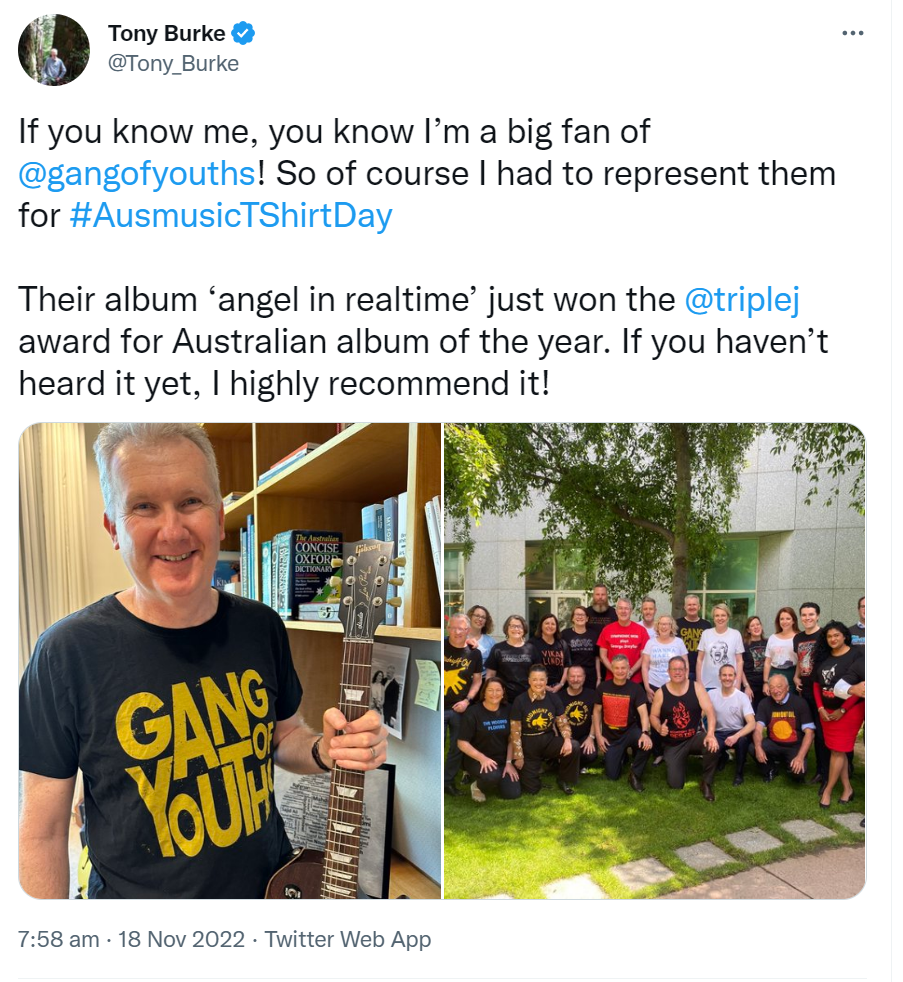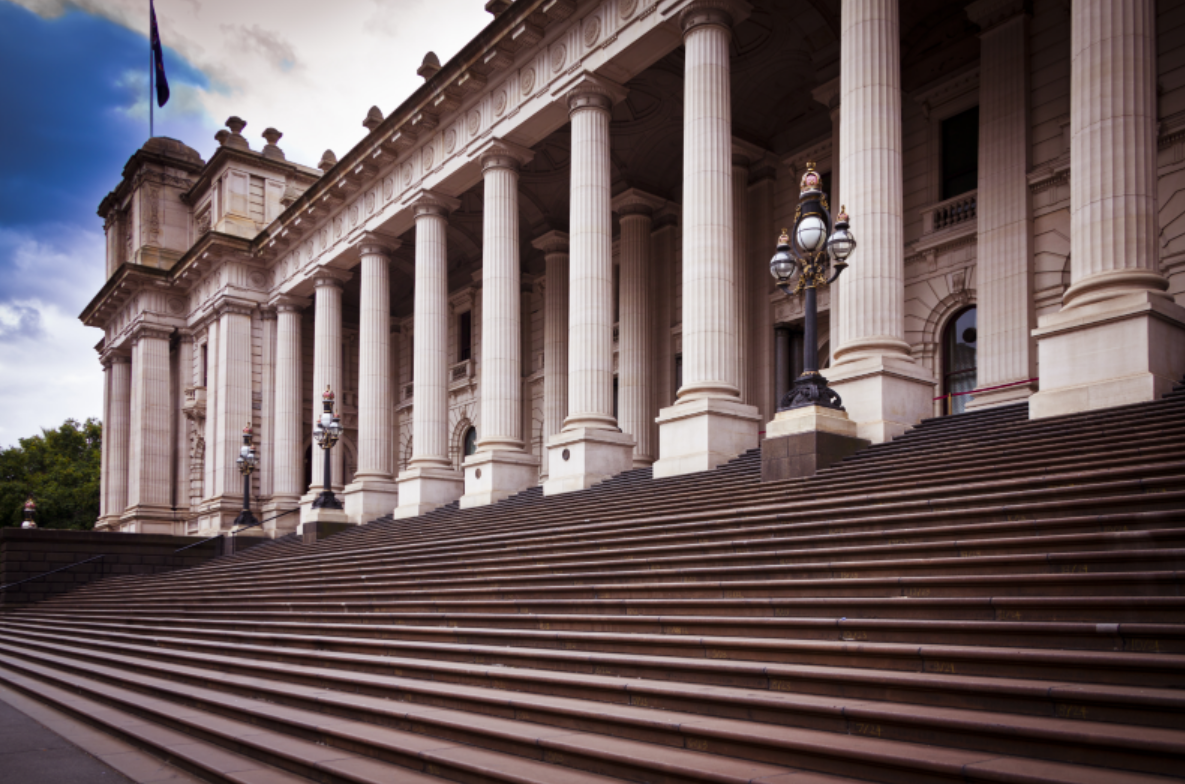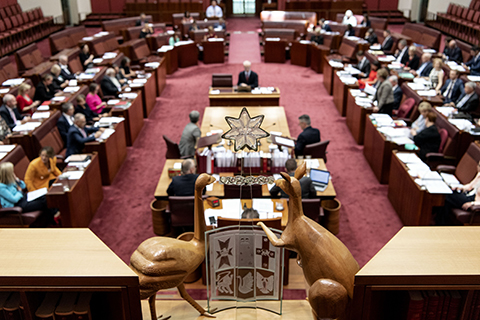Early voting has begun across Victoria as the state enters the campaign’s final week.
Earlier on Monday morning, the Herald Sun published the results of a Redbridge poll (the company closely associated with Climate200) suggesting the Coalition’s primary vote is tied with Labor’s at 38%; once the undecided vote is redistributed, Labor is credited with a two-party lead of 53.5-46.5 in the two-party preferred stakes. The narrowing Labor lead in primary polls has given the Liberals more hope to win back the former Liberal stronghold of Box Hill and the redistributed seats of Bayswater and Ringwood, which fell dramatically to Labor in the 2018 election.
The Labor Party has led Victoria’s state government for 19 of the past 23 years, and the Coalition faces an uphill battle to wrest power from the Andrews Labor government. Labor currently holds 55 seats to the Coalition’s 27 in the lower house. However, Labor’s path to winning a third term of majority government is unclear, with 740 candidates contesting lower house seats this November. For example, the seat of Point Cook (redistributed from the former electorate of Altona) has a staggering thirteen-candidate field.
Independent candidates are vying to pressure the Labor party in previously safe seats in Melbourne’s west, where infrastructure strain is emerging as a critical issue. In inner Melbourne, the Greens are targeting to seize the electorate of Richmond and believe it is in a strong position contesting for Northcote and Albert Park. Several candidates are fighting in previously safe Liberal seats in the inner east as they attempt to replicate some of the “teal wave” that washed through at the federal election.
The Labor Party and the Coalition have focused their election campaigns on promises to pour billions into the state’s health system and a raft of cost-of-living announcements.
Central to Labor’s election campaign launch is the commitment to bring back the State Electricity Commission, ensuring public ownership of Victorian electricity assets. The other major announcement includes a $207 million package for Victorian specialist schools, Building, upgrading and renovating new community infrastructure for multicultural and multifaith communities to the tune of $50 million and $150 million to support nurses and health staff. While the Liberals have committed to 43 different transport funding pledges totalling billions of dollars.
It is the first time Victorians will go to the polls since the pandemic, during which Premier Daniel Andrews fronted an extraordinary 120 consecutive daily press conferences. At the same time, Melbourne endured one of the world’s longest lockdowns, and Victoria recorded the nation’s highest number of COVID-19 case-related deaths.
Dirty tricks, frayed tempers and the vote whisperer
Every election has stories of sneaky tactics, high emotion and preference deals, and this campaign has lived up to it in every respect. All sides of politics, including Climate200, are in the spotlight.
Firstly, Liberal Leader Matthew Guy and his former Chief of Staff Mitch Catlin have been referred to the Independent Broad-based Anti-corruption Commission by the Victorian Electoral Commission. Regarding allegations, Mr Guy and Mr Catlin attempted to circumvent donation disclosure laws, particularly section 218B Victorian Electoral Act.
The Victorian Branch of the Liberal Party has also submitted letters to the VEC claiming Climate200 founder Simon Holmes a Court, Teal-backed entities, and Teal candidates also broke section 218B of the same act. The VEC has said they are investigating the claims with a decision likely to be handed down after the election’s conclusion.
Meanwhile, on the Labor side, a video has emerged with well-known preference whisperer Glenn Druery discussing preference deals with Angry Victorians Party candidate Chris Burton, and the Australian Values Party found Heston Russell to deliver Labor an amenable crossbench in the Upper House. In the video, Druery claims he made a deal with Victorian Labor to deny the Greens up to four seats in the 2018 election in return for candidates he will help elect and side with Labor to maintain the group voting system in the Upper House. The matter has been referred to IBAC for further investigation.
Finally, the Greens, banking on a Labor minority Government, have released a swag bag full of policy promises. Proposals of raising the age of criminal responsibility from 10 to 14, climate action, banning onshore and offshore gas exploration, capping rent increases in line with wages and creating more public and affordable housing, and ending native forest logging across the state. The political play is double-edged, signalling progressive electorates to vote Green while working with an Andrews Labor Government and fighting for gains in traditional Labor seats.
The Likely Outcome
A Labor win has been predicted, in what form that may take is genuinely in the hands of the voters. It is unlikely to see another 2018 style swing to Dan Andrews and Victorian Labor. For the Liberals, it is a period to clean out the house and start again. For the Greens and Independents, it is a time to push for gains in progressive suburbs. The prevailing view is that the state of Victoria is increasingly the ‘forever home’ of progressive politics in Australia.
Tweet of the Week:

Latest posts by Nexus APAC (see all)
- United Kingdom General Election 2024: An Overview - April 15, 2024
- Australian Voters Go to the Polls - February 26, 2024
- Secretaries of Federal Departments – An Overview - February 1, 2024



